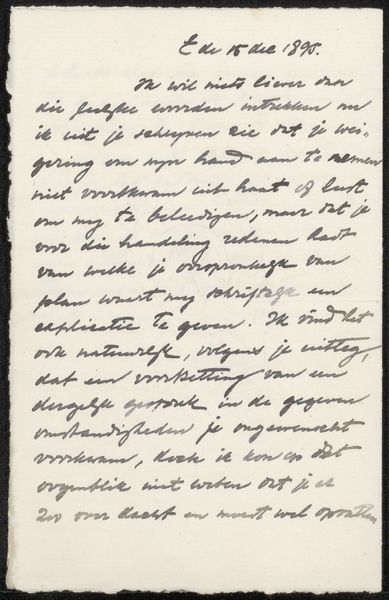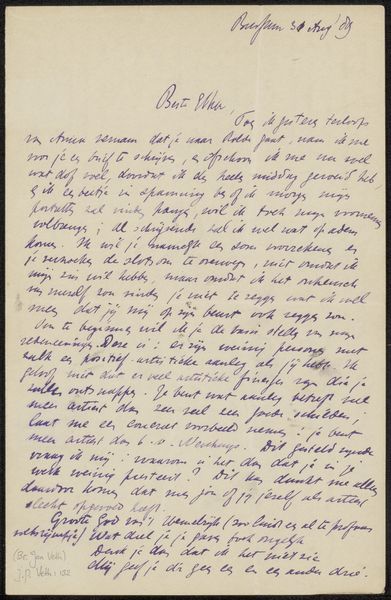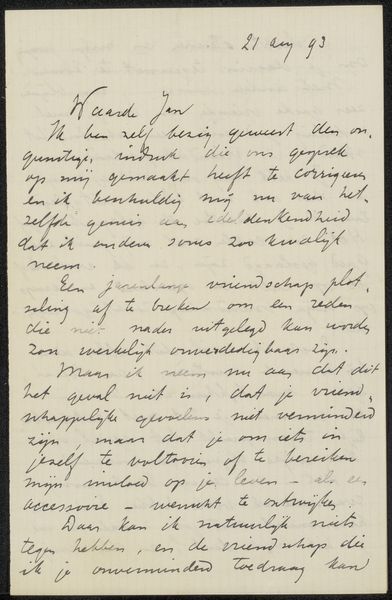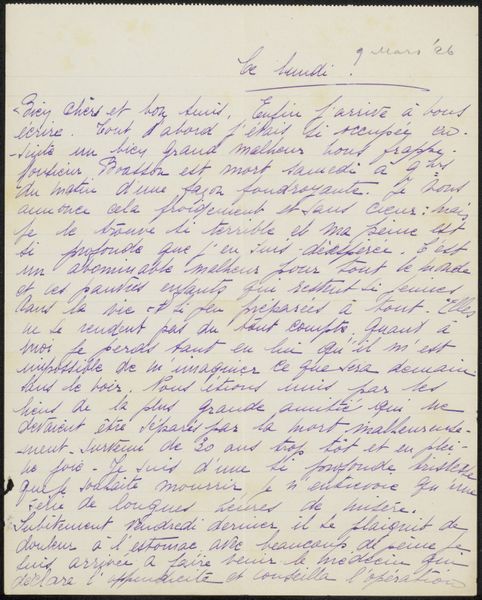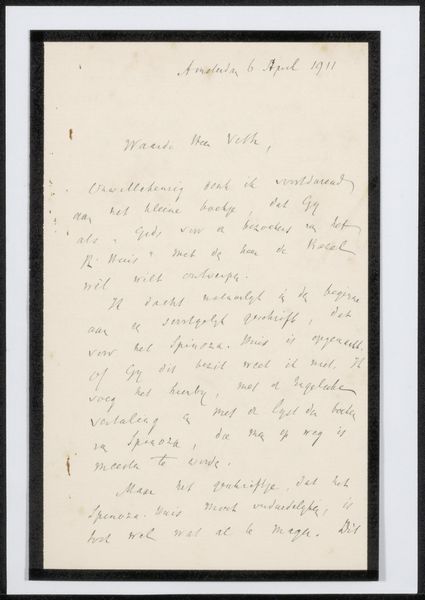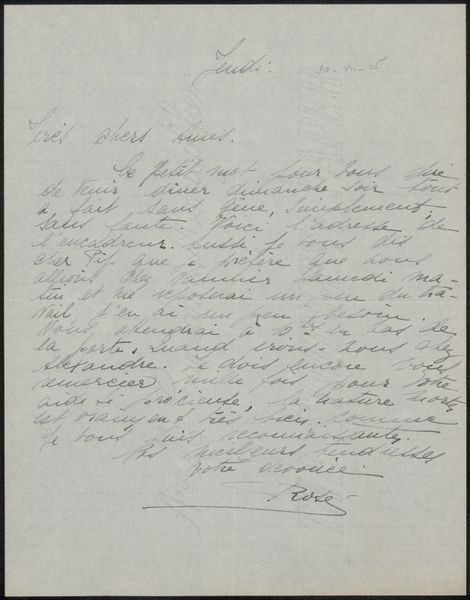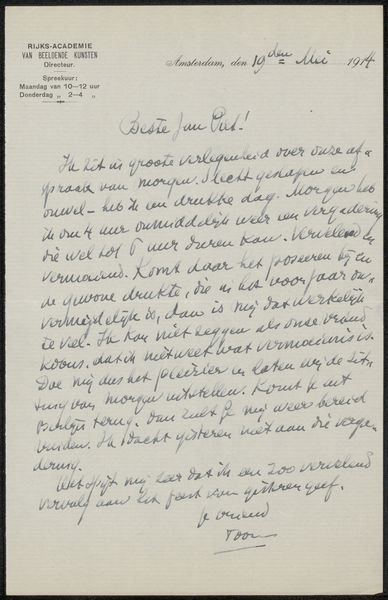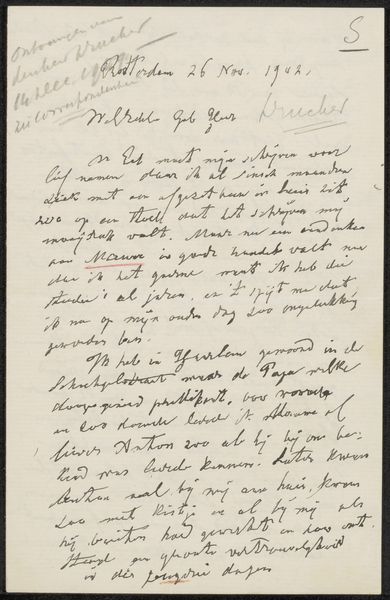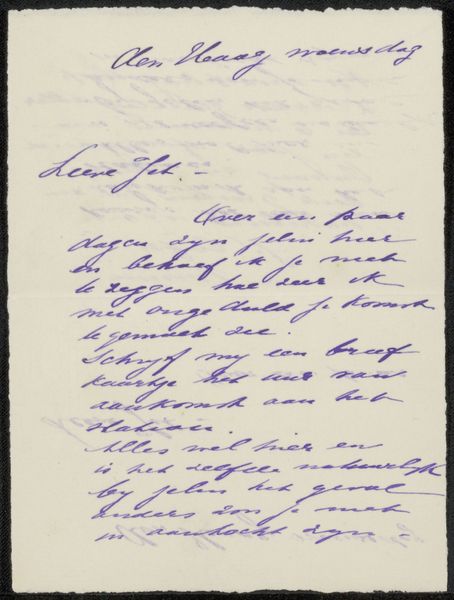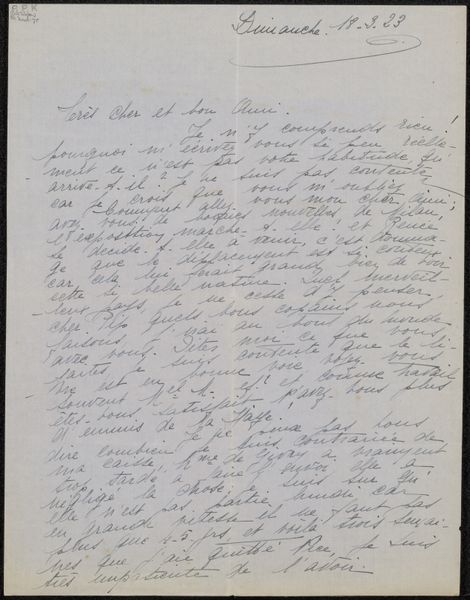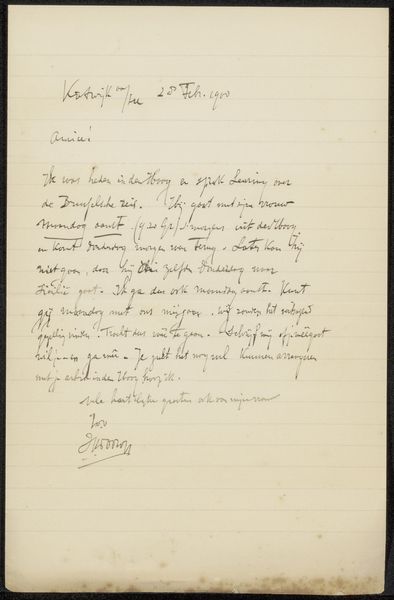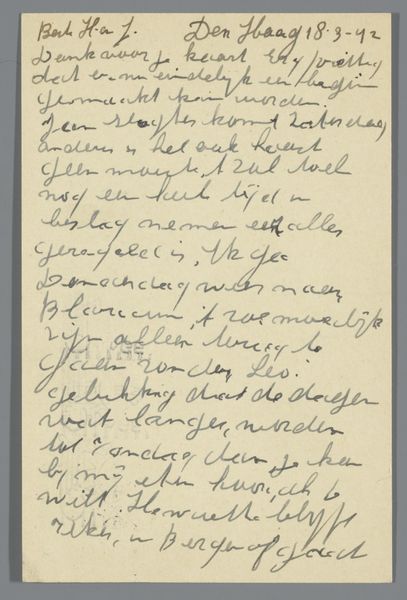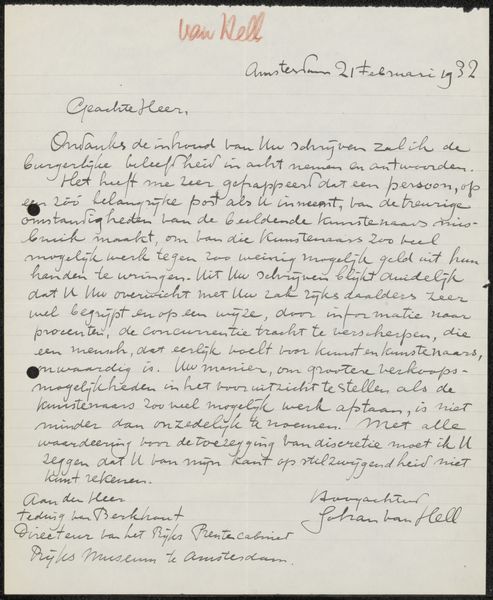
Brief aan jonkheer Hendrik Teding van Berkhout (1879-1969) Possibly 1931
0:00
0:00
drawing, paper, ink
#
drawing
#
paper
#
ink
#
miniature
#
calligraphy
Copyright: Rijks Museum: Open Domain
Curator: Let’s think about this letter from Johannes Frederik Engelbert ten Klooster as an object of labor. We see the handwriting, the paper itself, the ink… these are all elements of production. How does viewing this letter as something *made* shift your understanding of it? Editor: Well, right away, it makes me consider the effort it took to create. It’s so meticulously handwritten, it must have been time-consuming. "Brief aan jonkheer Hendrik Teding van Berkhout," probably dating to 1931, done in ink on paper with calligraphy. The density of the writing is what really jumps out. How can we look closer and examine it as an item to unpack? Curator: Precisely! Ten Klooster discusses being busy with "boetseeren in klee cu maken van gipsafgietsels” – sculpting in clay and making plaster casts. These artistic activities are directly linked to the letter's creation. The letter becomes an extension of the artist's studio practice, almost a byproduct. Notice the ink itself; think of its production and value in the early 30's. Editor: So, you're suggesting that the letter isn't just about the *message* he’s conveying, but also about the physical *act* of writing and the materials involved in its production? Curator: Exactly. It challenges the conventional boundary between ‘high art,’ like sculpture, and seemingly mundane forms of communication, like letters. Editor: So how did those plaster casts figure into daily Dutch life at the time? Would letter-writing be considered commonplace for the art world? Curator: Both the plaster and the written correspondence were important components of societal exchange and artistry. Consider, though, the labour that would be put into hand-writing each individual letter in comparison to making a cast and then mass-producing multiple items from a singular mould. The communication itself holds immense sentimental and networking value in the art world. Editor: That’s really interesting. I never thought about it in terms of the production process and labor involved. It changes how I perceive the value of the object. Curator: It reveals the connection between art, labour, and social interaction in a specific historical context. Examining these facets opens pathways toward a deeper exploration of artistic intention.
Comments
No comments
Be the first to comment and join the conversation on the ultimate creative platform.
